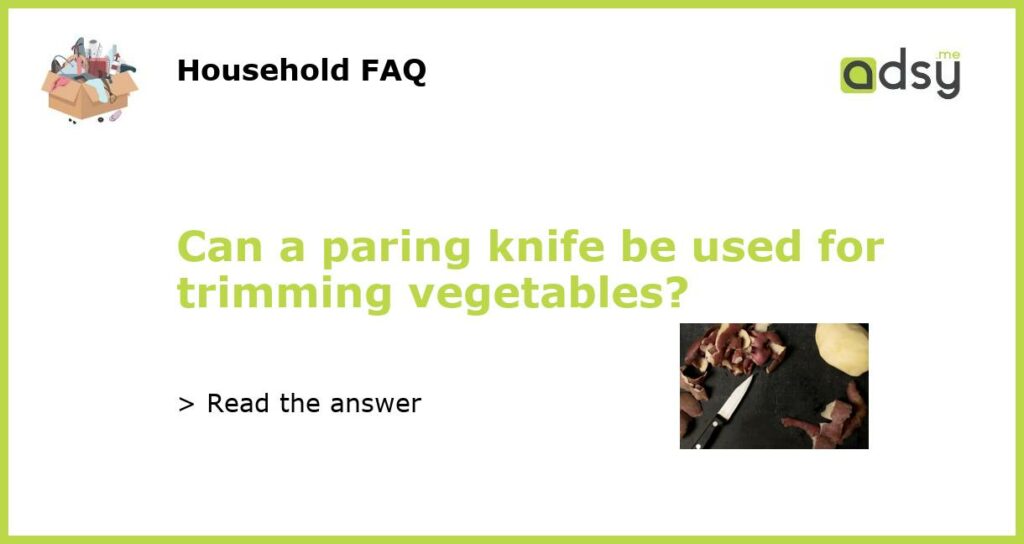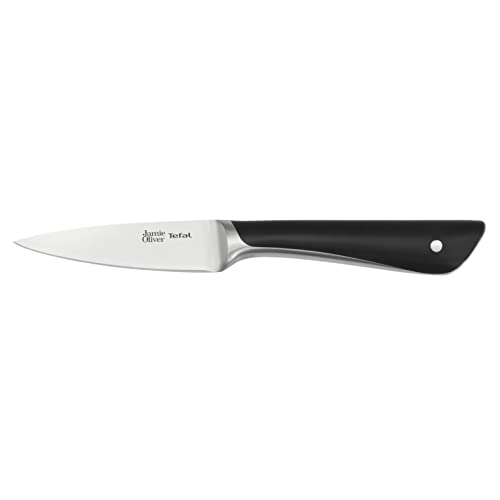Yes, a paring knife can be used for trimming vegetables
When it comes to preparing vegetables, having the right tools can make all the difference. While there are many specialized knives designed for specific tasks, a paring knife is a versatile option that can handle a variety of trimming needs. Although smaller in size compared to other knives, a paring knife is perfect for delicate and precise work such as trimming vegetables.
The benefits of using a paring knife for trimming vegetables
1. Precision: One of the main advantages of using a paring knife for trimming vegetables is its precision. The small and agile blade allows you to make precise cuts, such as removing the stems from strawberries or trimming excess fat from green beans. This level of precision ensures that you can remove only what is necessary without wasting any of the valuable portion of the vegetable.
2. Control: Another benefit of using a paring knife is the excellent control it provides. This type of knife allows you to have a firm grip and apply just the right amount of pressure when trimming vegetables. Whether you are trimming small vegetables like cherry tomatoes or removing the outer layer of an onion, the control offered by a paring knife minimizes the risk of accidents and also allows you to work efficiently.
3. Versatility: Paring knives are not only suitable for trimming vegetables, but they can also be used for other kitchen tasks. The pointed tip and sharp edge make paring knives ideal for peeling fruits and vegetables, deveining shrimp, and even slice small items like shallots or garlic cloves. Investing in a good quality paring knife can save you from having to buy multiple specialized knives, making it a cost-effective option for your kitchen.
Tips for using a paring knife for trimming vegetables
1. Keep the knife sharp: A dull knife can be dangerous and can make the task of trimming vegetables more difficult. Regularly sharpen your paring knife using a sharpening stone or a knife sharpener to maintain its effectiveness.
2. Use the right technique: When using a paring knife to trim vegetables, it is important to use the correct technique. Hold the handle firmly and use short, controlled strokes to make precise cuts. Avoid using excessive force or making long sweeping motions that can lead to accidents or uneven cuts.
3. Pay attention to your grip: Ensure that you have a secure grip on the knife to maintain control and prevent it from slipping. Position your fingers on the handle in a way that feels comfortable and allows you to maintain control over the knife.
When to use a different knife for trimming vegetables
While a paring knife is a great tool for trimming vegetables, there are instances when you may need to use a different knife:
1. Peeling thicker-skinned vegetables: If you need to peel thicker-skinned vegetables like butternut squash or pumpkin, a paring knife may not be the most efficient tool. Instead, opt for a vegetable peeler or a chef’s knife with a larger blade and sturdy handle for better control and ease of use.
2. Trimming large or dense vegetables: When dealing with larger or denser vegetables like cabbage or cauliflower, a paring knife may not provide the length or heft required. In such cases, a chef’s knife or santoku knife would be a better option as they offer more power and leverage.
Ultimately, a paring knife can be used for trimming vegetables in most cases. However, certain tasks may require the use of a different knife. It is important to choose the right tool based on the specific vegetable and the task at hand to ensure efficient and safe trimming.






